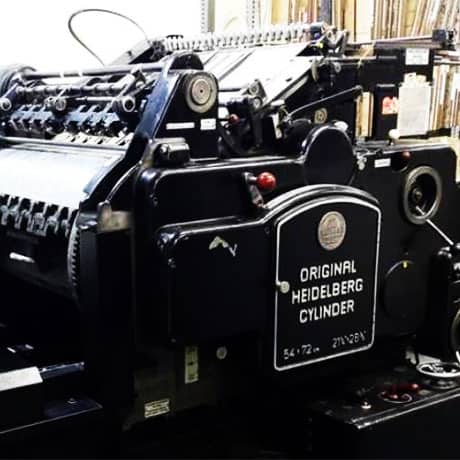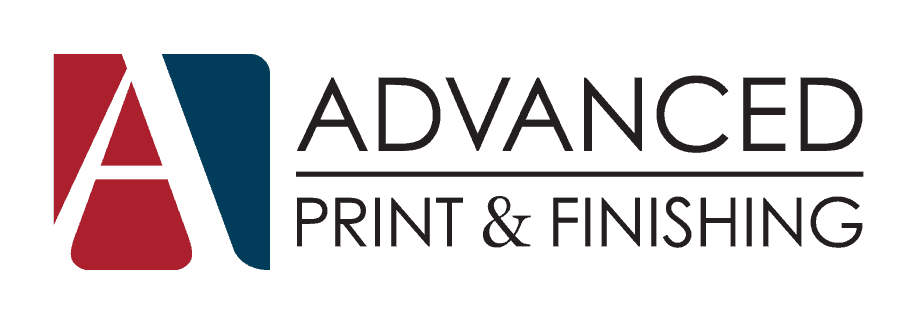
Part Two…
If you missed it, you can jump to Part 1 for an introduction to finishing and for some of the particulars of Decorative Finishes. Click here for Part 1.
Otherwise keep reading to find out more about Conversion options in Print Finishing.
CONVERSION
As stated earlier, conversion processes enhance usability of a product. In some cases, such as lamination, conversion may also enhance the look and feel of a product.
In no particular order let’s explore some of the more popular conversion options…
Lamination – When it comes to durability, lamination should be your go-to choice. And the number of choices for material is both wonderful and intimidating.
A quick look at our materials inventory and I see gloss, matte and soft touch finishes, standard and super stick adhesives and a myriad of options of each with different thicknesses of lamination and adhesion layers. And we can laminate just one side of the sheet or both sides depending on the product’s needs. Plus there’s flush trim and sealed edge options,
My advise is to give us a call to discuss your project and let us make an informed recommendation.
Index Tabs – Although more straight forward than lamination, Index Tabs can be created in a number of sizes to accommodate the number of tabs per bank required. You also have the option of using mylar on the tab to add protection and mylar on the spine edge to enhance strength.
Mylar is a good idea if you intend to mechanically bind the tab sheets. And don’t forget to specify if your tabs need to be drilled or punched for comb, spiral or ring binding.
Die Cutting – Die Cutting can enhance both usability and aesthetics. Die cutting allows us to create custom shapes such as curved pockets on a folder, a round window on a cover, a gusseted pocket or special index tabs.
Scoring – Lightweight stock typically doesn’t require a score in order to fold well. Heavyweight stock though will rarely fold well without a score. A score can help to prevent surface or image cracking at a fold. And if the piece is to be delivered flat for later assembly, a score takes the guess work out of how to fold the piece.
Perforating – A line of small, thin cuts in the paper that allow for easy separation. Perfing can also aid in assembly of a dimensional piece or used in the binding process to help purge air when a larger press sheet is machine folded.
Pocket Folders – As hinted under die cutting above, converting a pocket folder from a flat printed sheet is a multi step process. First the press sheet needs to be die cut and scored in order to account for the panels, pockets, gussets and glue tabs. A trip to the guillotine cutter to finish the prep work and then to the folder/gluer to convert the flat sheet to a pocket folder. Many custom features are available to include media sleeves, die cut windows, embossing, foil, etc. In fact, most of the options listed on this post are available on pocket folders. So don’t hold back… go wild!
Drilling – A little mundane compared to pocket folders but drilling is the most cost effective way to put holes in paper. Whether its for a three-ring binder, a wall calendar or an eyelet, drilling is a staple in the print finishing department.
Grommets / Eyelets – Not just for banners, grommets can serve as a mechanical binding method. Think of a set of sample sheets that are grommeted in the corner to allow easy fan-out. Or a set of laminated instruction cards that will be hung from a hook on the wall. Grommets ensure long term durability no matter what their purpose.
Cutting – Cutting is mostly a support process in printing. In commercial printing we almost always print multiple up on a larger sheet. With perfect binding we cut the book blocks oversize before binding and then final trim the top, bottom and face after binding. There’s nothing glamorous about cutting operations but it is the back bone of finishing.
Numbering – The original form of variable data, numbering requires that we first print the piece for all other content and then come back through to apply sequential numbers. This can be done multiple up so products like raffle tickets that require the same number be printed in different locations on the sheet can be done so in one numbering pass.
Folding – There are many types of folding for many different products. Suffice it to say that whether we need to fold a press sheet for perfect bound collation, a pocket folder with glue tabs or letterfold a mailer, Advanced Print & Finishing can accommodate your folding needs.
Gluing / Taping – Pocket folder conversion and other similar products require glue or tape to form pockets. Most pocket folders can be glued inline during conversion. Gusseted pockets (dimensional pockets) or other complex shapes often require hand taping and manual assembly. Either way we have you covered.
Our finishing experts are an indispensable resource available to you on any project. We are only a phone call or an email away: 770-664-8199 / finishing@advancedpf.com.
